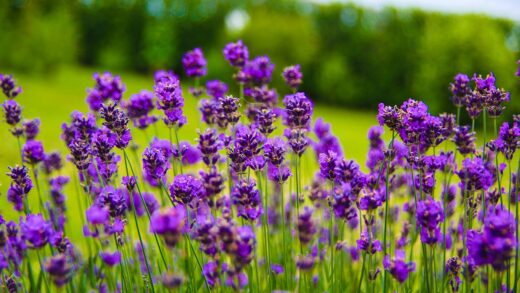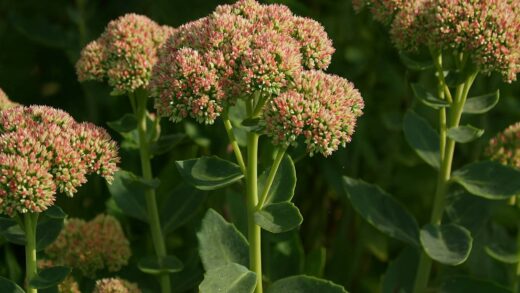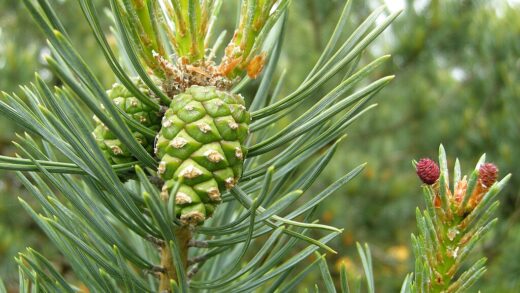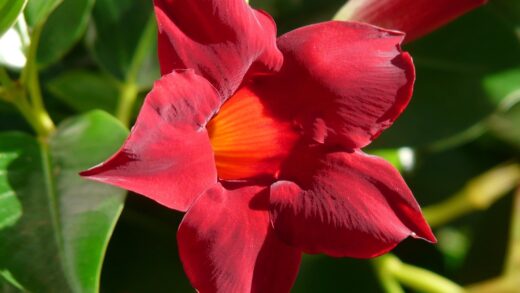The process of overwintering the amethyst hyacinth is, for the most part, a straightforward and hands-off affair, as this hardy bulb is well-adapted to surviving cold winter temperatures. Hailing from the mountainous regions of Europe, it possesses a natural resilience to frost and snow, making it a reliable performer in temperate climates. The key to successful overwintering lies not in complex protection strategies, but in ensuring the foundational planting conditions are correct. Providing the bulb with the well-drained environment it craves is the single most important factor in seeing it safely through the winter months and ensuring its vigorous return in the spring.
Brimeura amethystina is generally considered hardy to at least USDA zone 5, meaning it can withstand winter temperatures that drop as low as -20°F (-29°C), provided it is planted in the ground and has the insulating protection of the soil and potentially a layer of snow. The bulb’s dormant state during the winter is a biological adaptation that allows it to conserve energy and survive freezing conditions that would kill the soft, active tissues of leaves and flowers. The main threat during winter is not the cold itself, but rather the combination of cold and excessive wetness, which can lead to rot and frost damage.
For amethyst hyacinths planted in garden beds and borders, very little special winter care is required once they have been established. The soil itself provides a significant amount of insulation, protecting the dormant bulbs from the sharpest fluctuations in air temperature. In regions that reliably receive a blanket of snow, this provides an additional, excellent layer of natural insulation, keeping the soil temperature more stable. The primary task for the gardener is simply to ensure that the area where the bulbs are planted does not become a sump for winter rain and melting snow, which again underscores the critical importance of selecting a site with excellent natural drainage.
In very cold climates at the limit of the plant’s hardiness range, or in areas where snow cover is unreliable, providing a winter mulch can offer some beneficial extra protection. After the ground has frozen lightly in the late autumn or early winter, you can apply a loose, airy layer of mulch over the planting area. Suitable materials include straw, shredded leaves, pine boughs, or bark chips. This mulch helps to insulate the soil, preventing repeated freezing and thawing cycles which can heave the bulbs out of the ground, and it provides an extra buffer against extreme cold snaps.
The importance of autumn preparation
The journey to successful overwintering begins in the autumn, long before the first frosts arrive. This is the period when the dormant bulbs begin to reawaken underground, initiating the growth of new roots in preparation for the spring. The presence of adequate soil moisture during the autumn is important to facilitate this root development. If you are experiencing a particularly dry autumn, it may be beneficial to provide a deep and thorough watering to the area where the bulbs are planted, which will help to trigger this vital pre-winter activity.
More articles on this topic
Autumn is also the ideal time to ensure the planting area is clean and free of debris. Removing fallen leaves and other garden detritus from on top of the bulb planting can help to prevent the area from becoming overly damp and can also reduce the number of hiding places for overwintering pests like slugs and their eggs. This simple act of tidiness contributes to better air circulation at the soil level and reduces the risk of fungal diseases taking hold during the mild, wet periods that can occur during the winter months. A clean slate in autumn leads to a healthier start in the spring.
Furthermore, if you are considering applying a phosphorus-rich fertilizer to encourage strong root growth, autumn is the perfect time to do so. A light application of bone meal or a similar slow-release organic fertilizer can be gently worked into the surface of the soil. This will provide a sustained source of this crucial nutrient throughout the winter, supporting the development of a robust root system that will be ready to fuel the plant’s rapid growth as soon as the soil begins to warm up in the spring.
Finally, ensuring that the bulbs are planted at the correct depth is a fundamental aspect of autumn preparation for winter. Bulbs that are planted too shallowly are more vulnerable to temperature fluctuations and frost heave. The general rule of planting at a depth of two to three times the bulb’s height ensures that there is a sufficient layer of insulating soil above the bulb. If you have bulbs that have worked their way closer to the surface over time, autumn is a good opportunity to carefully lift and replant them at the proper depth.
Overwintering in containers
Overwintering amethyst hyacinths that are grown in pots and containers requires a different and more considered approach than for those grown in the ground. The soil in a container is exposed to the cold air on all sides, as well as from the top, which means it will freeze much more quickly and to a much greater depth than the soil in a garden bed. This puts the bulbs at a significantly higher risk of being damaged or killed by freezing temperatures, even in climates where they would be perfectly hardy in the ground.
More articles on this topic
Therefore, some form of protection for container-grown bulbs is essential in all but the mildest of winter climates. One simple and effective method is to move the containers to a more sheltered location for the winter. Placing them against a house wall, especially one that faces south, can provide a surprising amount of protection, as the wall will absorb heat during the day and radiate it back at night, creating a slightly warmer microclimate. Grouping several pots together can also help them to insulate each other.
For those in colder regions, more substantial protection is needed. You can wrap the pots in layers of burlap or bubble wrap to provide insulation. Another excellent technique is to “plunge” the pots into an empty garden bed. This involves digging a hole large enough to accommodate the pot and sinking it into the ground so that the rim is level with the soil surface. The surrounding garden soil then provides excellent insulation for the pot’s root ball, mimicking the conditions of being planted directly in the ground.
Alternatively, if you have a suitable space, the pots can be moved into an unheated but protected environment such as a cold frame, a shed, a garage, or a cold greenhouse. The key is that the location should be cold enough to provide the necessary winter chill that the bulbs require to flower properly, but it should protect them from the most extreme temperature drops and from becoming completely saturated by winter rain and snow. A cold but dry and sheltered environment is the ideal overwintering location for container-grown Brimeura.
Managing winter moisture
While extreme cold can be a danger, particularly for container-grown plants, the single greatest threat to overwintering amethyst hyacinths is excessive moisture. Dormant bulbs are highly susceptible to rot when they are forced to sit in cold, waterlogged soil. This is why excellent drainage is the most frequently emphasized requirement for their cultivation. During the winter, periods of heavy rain or melting snow can lead to saturated soil conditions that can be fatal for the bulbs.
For bulbs in the ground, the best defense against winter wetness is a well-prepared site. Planting on a natural slope, in a raised bed, or in a gravel or rock garden ensures that excess water drains away quickly from the root zone. If your garden is naturally flat and has heavy soil, creating a dedicated, amended bed with a high proportion of grit is the most reliable way to provide the necessary conditions for winter survival. Avoid planting amethyst hyacinths in low-lying areas of the garden where water naturally collects.
For container-grown plants, managing winter moisture involves protecting them from excessive precipitation. If the pots are left out in the open, they can easily become filled with water during heavy winter rains, which, combined with freezing temperatures, is a recipe for disaster. This is another reason why moving pots to a sheltered location, such as under the eaves of a house or into a cold frame, is so beneficial. This allows you to control the amount of moisture the pot receives, ensuring the soil stays on the drier side of moist throughout the winter.
If you are overwintering pots in a dry location like a shed or garage, you will need to monitor the soil moisture periodically. While you want to avoid saturation, you also do not want the soil to become completely bone-dry for the entire winter, as this can desiccate and kill the developing roots. The soil should be kept just barely moist. Checking the pots once a month and providing a very small amount of water if the soil is completely dry is usually sufficient to maintain the bulbs in a healthy state until spring.

















